
QuakeQuizsf.org
Earthquake and geodynamic research groups formed as a forum for researchers and engineers of the Quake Quizsf Geotechnology Research Center to develop and foster passion, talent, and competence in the field of geology and geophysics.
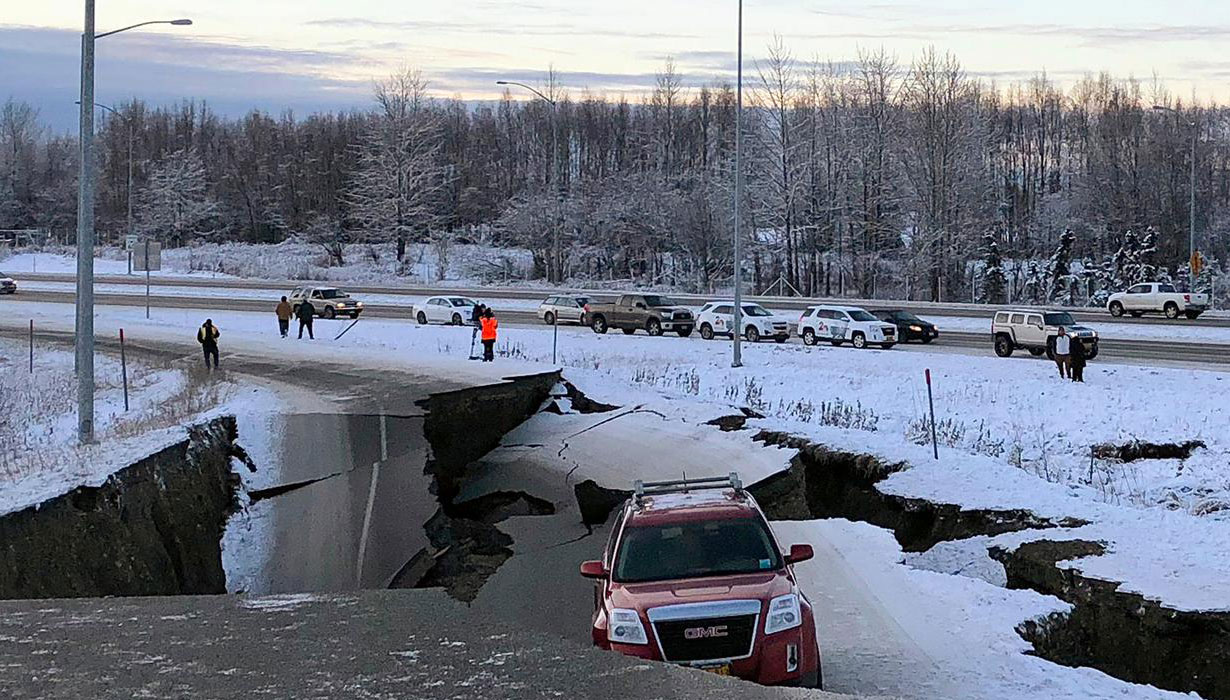
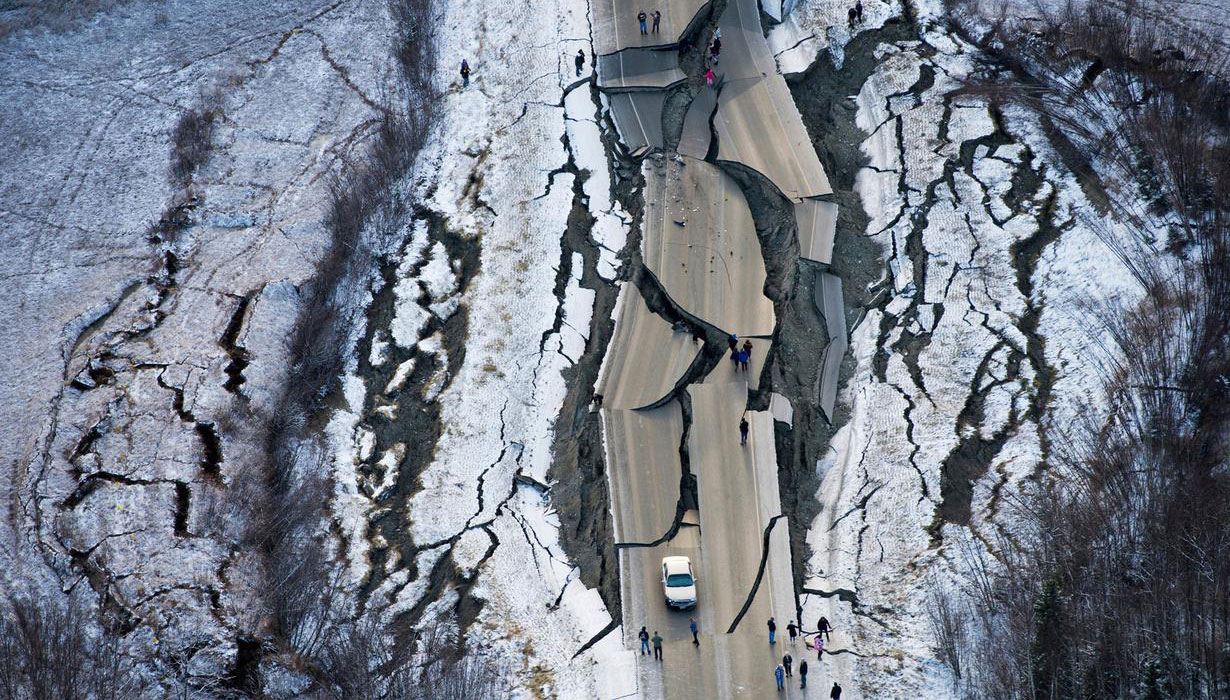
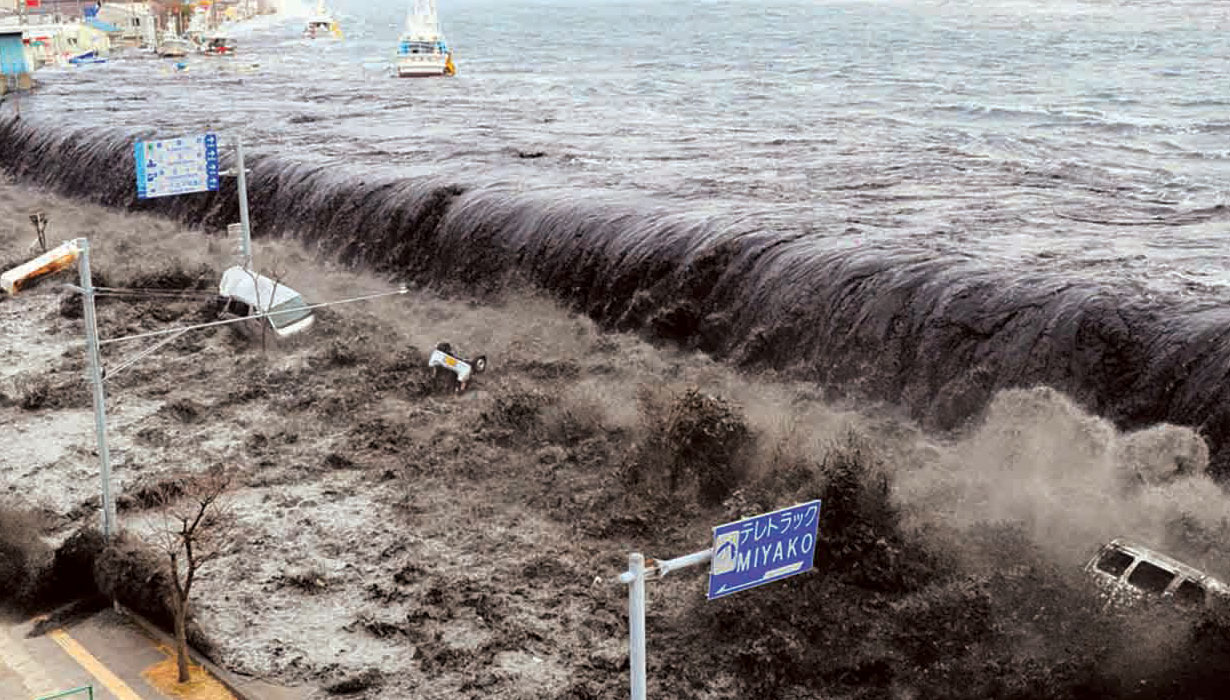
One car was trapped on a collapsed Minnesota Drive road following an earthquake in Anchorage, Alaska. And most of the overpasses near the Anchorage airport collapsed until a car was trapped in a wrecked vehicle on Friday (11/30).
Damage on Vine Road after the earthquake that hit Wasilla Alaska, visible from the air. An earthquake with a magnitude of 7 SR and 5.7 SR destroyed the highway and destroyed buildings. Also, this earthquake triggered a tsunami wave warning on Friday (30/11).
The magnitude 9 SR earthquake in Sendai, Japan was rocked by an earthquake followed by a tsunami. As a result of this incident, 15 thousand people died, and it is feared to be much higher because more than 8 thousand people are missing.

Earthquake and geodynamic research groups formed as a forum for researchers and engineers of the Quake Quizsf Geotechnology Research Center to develop and foster passion, talent, and competence in the field of geology and geophysics.
You can contact us via email info_quakequizsf@gmail.com
Through the "Rope of Love", we hope that you can care and extend assistance to those affected by the earthquake.
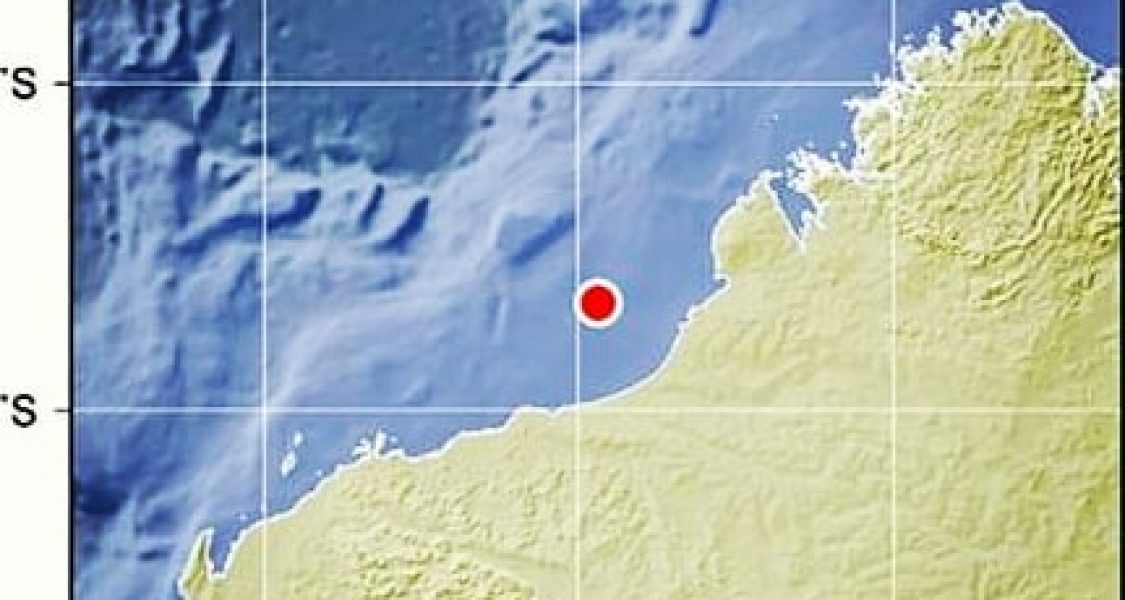
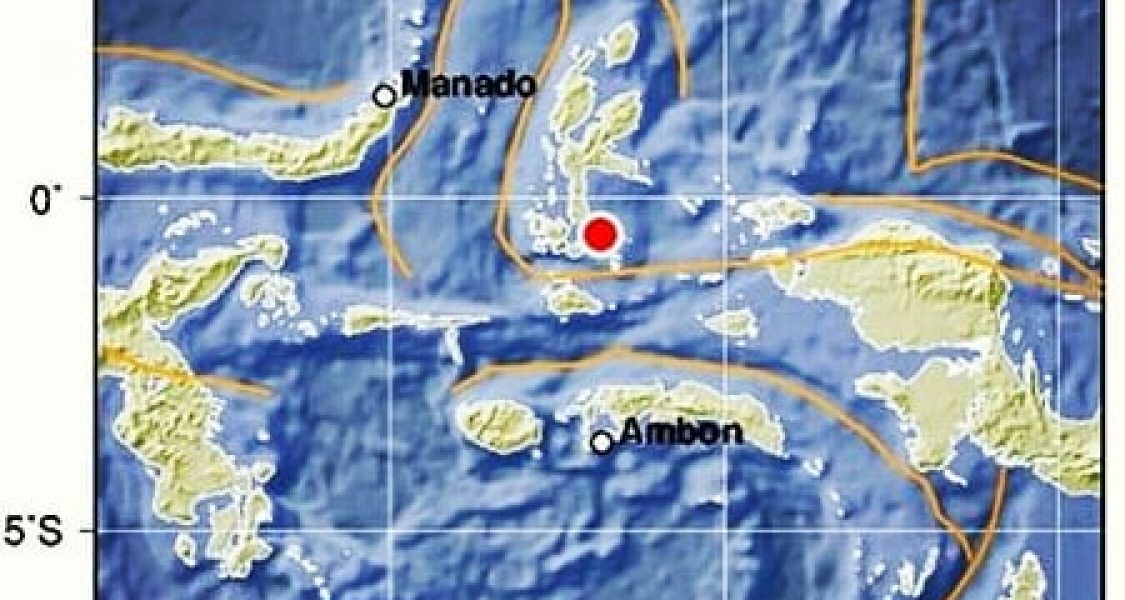
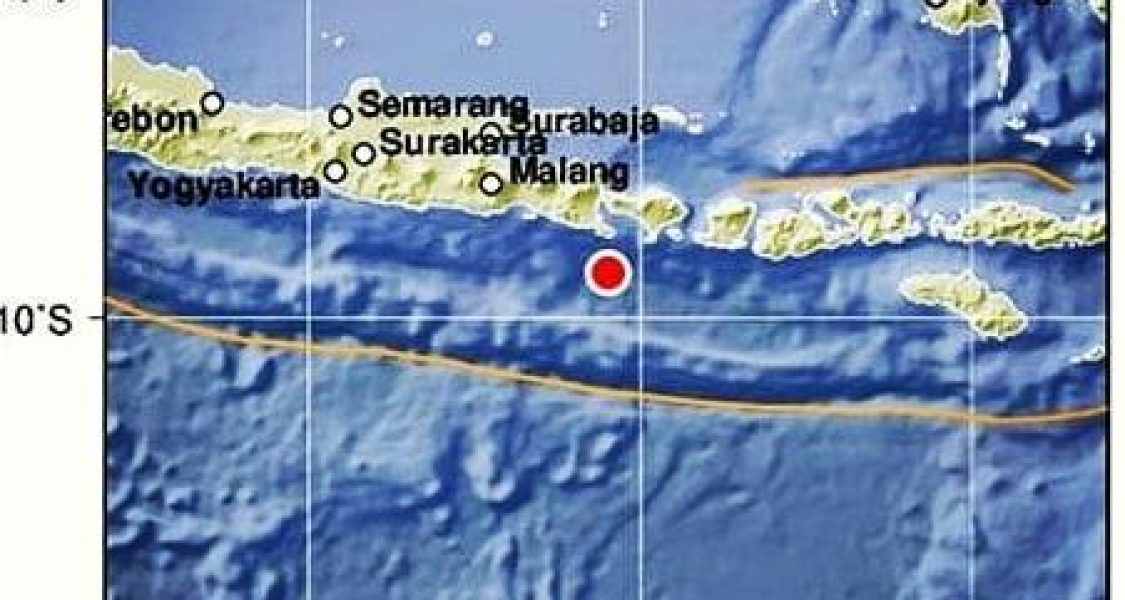
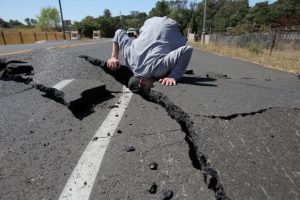
The earthquake is one of the natural disasters which naturally often takes many victims. For this reason, it feel necessary to provide you with general knowledge about earthquakes.
In this article, we will discuss the types of earthquakes based on their causes. By knowing the types of earthquakes based on their causes, you can better understand why earthquakes can occur.
What are the types of earthquakes based on their causes? Come on, see the following review!
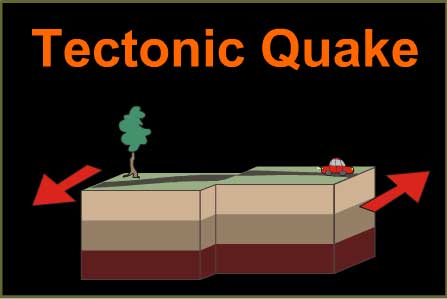
Tectonic earthquakes are earthquakes caused by shifts in the earth’s plates. This earthquake can have very small vibrations to the greatest tremors. When it develops into a large-scale earthquake, tectonic earthquakes can destroy and ravage anything above the earth’s surface including.
Earthquakes that often occur in earthquake-prone countries like Indonesia are basically mostly categorized as tectonic earthquakes. If the source of the tectonic earthquake is at sea, it can cause a tsunami that can hit the plains. Like the earthquake that occurred in Lombok some time ago, much of the infrastructure in Lombok is falling apart and almost completely flattened.
Tectonic earthquake vibrations can penetrate to all parts of the earth, you know. That is, if an earthquake occurs in Indonesia, several countries around Indonesia can feel it. Depending on the starting point of the earthquake location. Tectonic earthquakes usually affect areas that occupy the Pacific cyclum and Mediterranean cyclum.
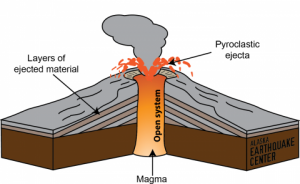
The definition of a volcanic earthquake is an earthquake that occurs because of the movement of magma in the volcano. Usually, this type of earthquake occurs when the volcano is active and just before it erupts.
Volcanic earthquakes occur because of the enormous gas pressure on the crater blockage. So, if a tectonic earthquake is caused by friction of the earth’s plates, volcanic earthquakes are caused by gas pressure.
In contrast to tectonic earthquakes, the vibrations produced by volcanic earthquakes are only felt by residents around the volcano. In addition, when compared to tectonic earthquakes, volcanic earthquakes are not too dangerous. Because the most dangerous thing in the phenomenon of a volcanic earthquake is the phenomenon of volcanic eruptions, this one earthquake also often occurs in Indonesia, especially in areas with active volcanoes.

An artificial earthquake is an earthquake caused by the use of explosives with very large explosive power. That is, this earthquake was indirectly man-made, not natural. Typically, large-scale explosives are used to tear down high-rise buildings to be replaced with new buildings.
However, there are also artificial earthquakes that occur because of testing explosives, such as testing nuclear bombs or other explosives that have explosive power equivalent to nuclear bombs. The vibrations that occur are caused by explosions and various objects that hit the earth when blown up.
This earthquake is local; that’s why the earthquake was only felt around the explosion. But you must be wary when the event occurs. For example, in one area, there is a plan for blowing up a multi-story casino building. Warn the casino players to stay at their home for their safety. Or you can told them to stay in their home for a while. The collapse of the building’s debris to the earth would cause tremors. The vibration will felt by residents around the building was torn down.
An earthquake is an earthquake that occurs as a result of a landslide. Landslides can be caused by erosion or collapsed limestone mountains. Or, it could also occur because of a collapsed mining site.
Earthquake vibrations that occur from earthquake collapse come from falling rocks due to landslides to the earth’s crust. The vibrations generated by this earthquake will not spread to other areas, and the natural environment is felt by residents around the landslide.
This type of earthquake collapse is very rare. Whenever it happens, it indicates that natural damage has occurred in the earthquake area.
A collision earthquake is an earthquake produced by the fall of celestial bodies, such as asteroids and meteors, to the surface of the earth. This tremor was caused by the impact of a collision between a falling celestial body and the surface of the earth.
The result of the collision, in addition to causing vibrations on the surface of the earth, also caused the creation of craters or holes in the surface of the earth. The crater can be small and can be large, depending on the size of the celestial body that hits the surface of the earth.
This collision earthquake is very rare nowadays because there has not been an event of the fall of heavenly bodies in recent years.
Those are several types of an earthquake based on the cause. If you want to continue to update with a variety of useful information, then you must continue to follow various news articles on our Blog.
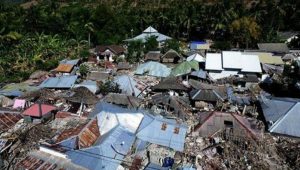
ASEAN countries poured funds amounting to 40 million yen or equivalent to Rp5 billion for victims and earthquake recovery in Lombok, West Nusa Tenggara.
Many companies try to provide assistance and open services for volunteers to go directly. One of them is the casino and gambling game company sbobet in the Philippines, which has long provided all types of complete online gambling from almost all sports. SBOBET Inc. felt cared for and moved to ease the burden on the victims
Representative from this activity said the assistance came from donations of the Japanese Red Cross Society of 10 million yen and government contributions, including some civil society organizations amounting to 30 million yen.
“This assistance is a form of retaliation because Indonesia was present when Japan was hit by the earthquake and tsunami some time ago,” he said as he handed over symbolically to Red Cross Organization in Indonesia.
“Therefore, whatever we can do, we are ready to help Indonesia. We are with Indonesian citizens and the government,” he added.
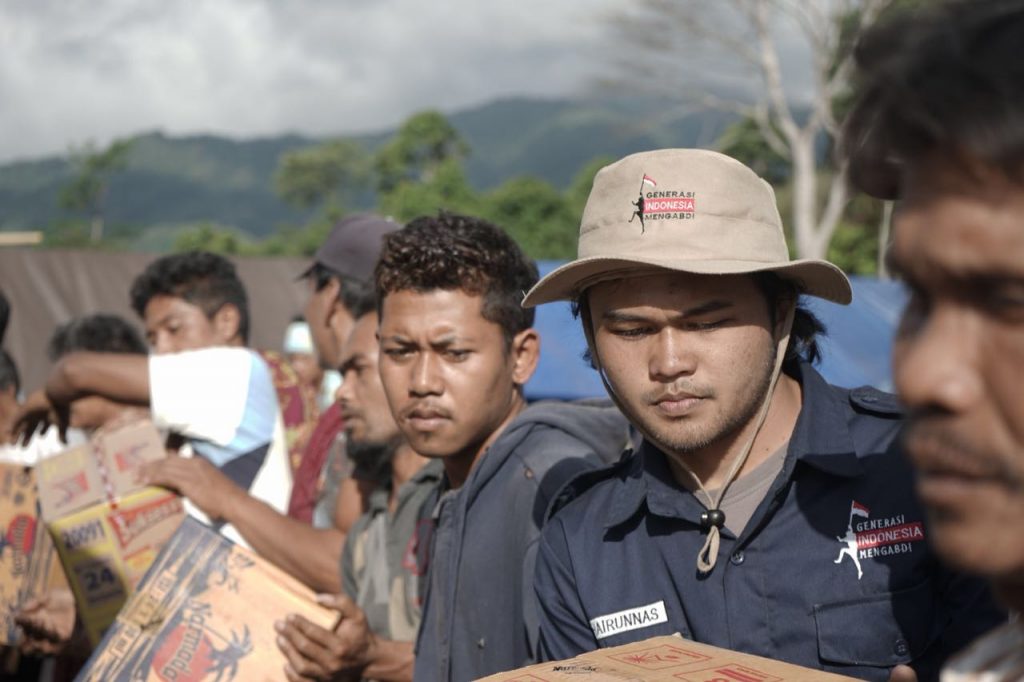
An earthquake measuring 7 on the Richter scale again struck Lombok and surrounding areas. Based on data from the National Disaster Management Agency (BNPB), the earthquake that felt as far as Bali Island has so far killed 460 people and injured 7,773 others.
As many as 396 people died in North Lombok Regency, 39 people in West Lombok Regency, 12 people in East Lombok Regency, nine people in Mataram City, two people in Central Lombok Regency, and two people in Denpasar City.
Meanwhile, of the thousands of people injured, 959 people were seriously injured to require hospitalization, and the remaining 6,774 suffered minor or moderate injuries on an outpatient stage.
BNPB also recorded a loss of Rp. 7.45 trillion, in which at least 71,962 houses were severely damaged, moderately, to mild. In addition, as many as 671 units of educational facilities, 52 units of health facilities, 128 units of worship facilities, 20 units of offices, and 6 units of bridges were damaged.
In addition to financial assistance, Japan would help supply clean water and medical aid for earthquake victims.
Not only Japan, but many countries have also contributed to the Indonesian government to help restore conditions in Lombok.
The Taiwanese government is willing to offer assistance to rebuild 100 damaged homes at the cost of around Rp 3 billion.
Singapore has also spent IDR 1.4 billion as initial funding for the recovery of the Lombok earthquake. The funds were obtained from public fundraising held by the Singapore Red Cross.
Not wanting to be left behind, China also contributed at least Rp1.44 billion to victims affected by the Lombok earthquake.
Not only aid but the Lombok earthquake also highlighted the world’s attention. Many friendly countries such as Malaysia, South Korea, Australia, Britain, and Iran also expressed their condolences and support for the citizens and the government of Indonesia, especially the families of the victims affected by the disaster.
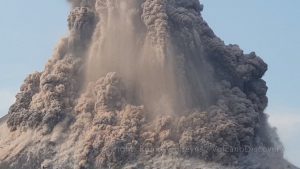
The earthquake and tsunami that destroyed Japan in 2011 showed that modern life is still vulnerable to the forces of natural disasters. Even with what happened in Palu last September and in Aceh in 2004.
According to experts, tsunamis can be generated by significant water displacement in oceans or lakes. However, they are most often caused by the movement of tectonic plates at the bottom of the ocean, during a devastating earthquake.
However, tsunamis can also be triggered by volcanic eruptions, the impact of meteorites, or landslides. Based on articles written on australiangeographic.com.au, tsunamis often occur throughout the history of human civilization. But the country most often ‘approached’ in Japan.
The word tsunami is also said to originate from the language of the State of Sakura: ‘tsu’ means harbor, and ‘nami’ is a wave. “It was quite frightening to realize that this (Japanese tsunami) event was smaller in scale than the Indian Ocean tsunami that occurred in 2004, even smaller than the 1960 Chile tsunami.
But the death of the population and the damage it caused the Japanese economy to plummet, “said Director of the Australian Tsunami Research Center and Natural Hazards Research Lab at the University of New South Wales, Professor James Goff.
He added, “This is a tragedy caused by a truly unexpected event.”
Because there is little historical data on the size of the tsunami waves, scientists rank them according to the amount of damage caused by the tsunami. Here are 5 of them:
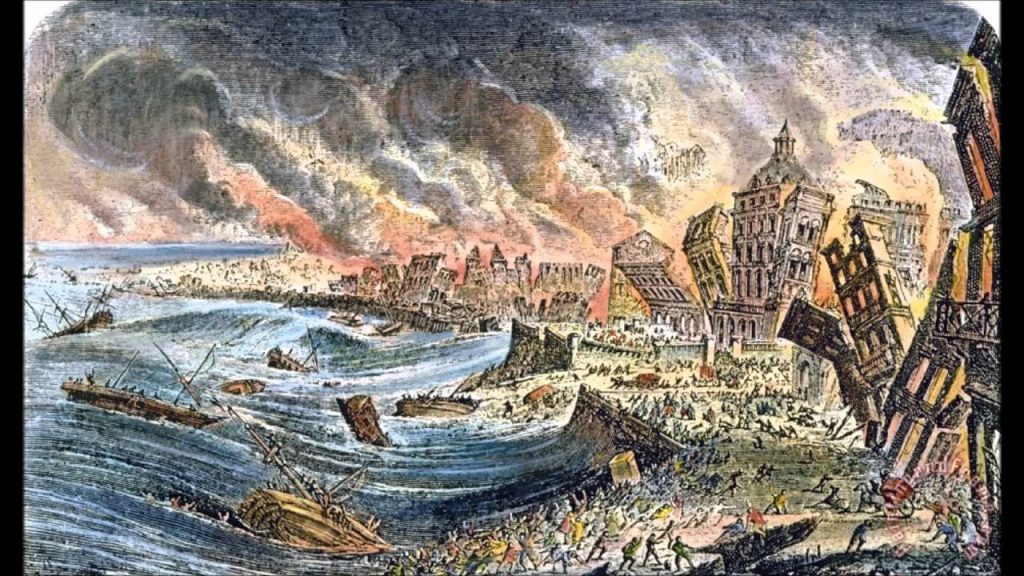
At 9.40 local time, an 8.5 magnitude earthquake shook Lisbon and the surrounding area – along the west coast of Portugal and southern Spain. Worse yet, the earthquake was followed by a tsunami and severe fires.
Geologists say the epicenter of the earthquake was in the Atlantic Ocean, about 200 km (120 miles) southwest of Cape St. Vincent. Total deaths were recorded between 60,000 and 100,000 people.
Reports at the time stated that the earthquake, which lasted between 3 and 6 minutes, caused a large fracture as wide as 5 meters to appear in the middle of the city. About 40 minutes after the earthquake, a massive tsunami hit the harbor and entered the city through the Tagus River. More than two waves followed the quake.
Whereas in areas not affected by tsunamis, large fires suddenly occur. The red rooster devoured the city for three days. Lisbon is not the only city in Portugal affected by the disaster. Along the southern part of the city, especially the Algarve, the damage is rampant. Sudden waves from the earthquake spread throughout Europe as far as Finland and North Africa.
A 20-meter high tsunami swept the coast of North Africa and hit Martinique and Barbados that crossed the Atlantic. A three-meter tsunami hit the coast of southern England.
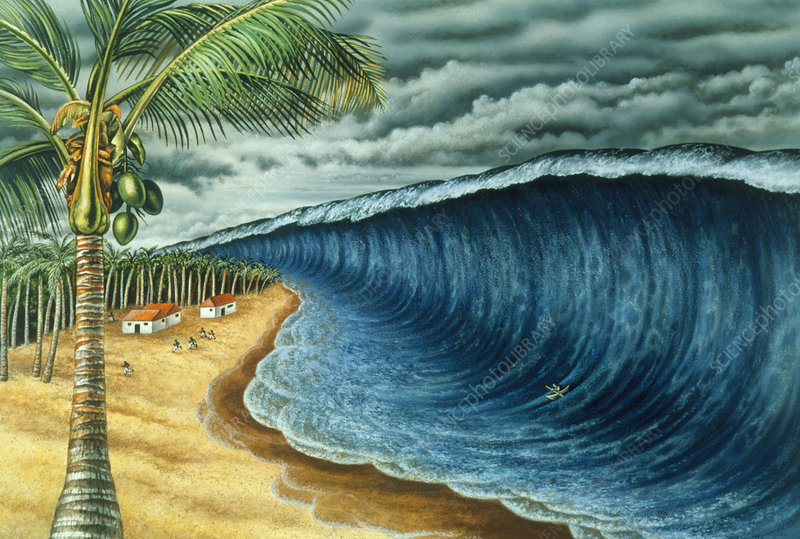
Suspicious things have been monitored from Krakatau for a long time. In May 1883, the captain of the German warship, Elizabeth, reported a burst of an ash cloud on the mountain located in the Sunda Strait. It reaches 9.6 kilometers high. And for two months later, commercial ships, as well as those deliberately chartered for tourism, watched Krakatoa up close, reporting the roar and glowing clouds.
Meanwhile, residents on the nearby island hold a kind of festival to celebrate the natural ‘fireworks’ that light up the night sky. They are not aware, and the danger is approaching. On Sunday, August 26, 1883, at 12:53 am, the initial eruption spewed clouds of gas mixed with volcanic material as high as 24 kilometers above Mount Perboewatan.
“Krakatau’s dying convulsions lasted 20 hours and 56 minutes,” Simon Winchester revealed in his Krakatoa book: The Day the World Exploded, August 27, 1883.
The climax is a devastating explosion that occurred on Monday, August 27, 1883, at 10:02 am. Four catastrophic explosions that occurred deafened people who were relatively close to Krakatoa. However, the roar was heard as far as Perth, Australia, which is 4,500 kilometers away. Its strength is equivalent to 200 megatons of TNT, more than 10,000 times the power of the atomic bomb that destroyed Hiroshima, Japan, at the end of World War II. Tephra and hot clouds claimed many lives in Java and western Sumatra.
However, the majority of fatalities, totaling 36 thousand, fell due to the tsunami. A 120-foot or 36.5-meter high wall of water appeared, triggered by the collapse of Krakatoa and the rise of the seabed. In the coastal area, the sound of thunder could be heard from a distance, his voice getting closer and stronger. The sea then goes crazy.
The tsunami struck mercilessly, the native-owned house of the thug, and the red-roofed building of the European people in Anyer was destroyed. Other coastal regions in Java and Sumatra have the same fate.
The explosion threw about 45 cubic kilometers of volcanic material into the atmosphere. Darken the sky that overshadows the area in a radius of 442 km from Krakatau. Barographs around the world document 7 shock waves.
Within 13 days, layers of sulfur dioxide and other gases began to filter out the amount of sunlight that could reach the Earth. Atmospheric effects caused by making spectacular sunset views throughout Europe and the United States. Global temperatures average 1.2 degrees colder over the next five years.
Forbes media said, the eruption of Krakatoa, in some aspects, is the first global disaster recorded in history. And, thanks to the discovery of modern communication tools (telegraph), reportedly soon spread throughout the world. After the eruption, Krakatoa was destroyed. Starting in 1927 or about 40 years after the eruption of Mount Krakatoa, volcanoes emerged known as Anak Krakatau.
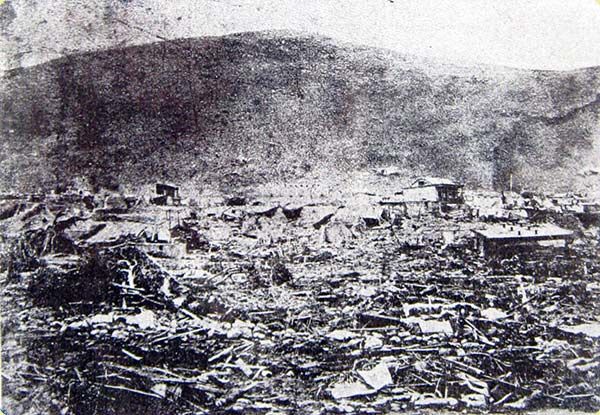
On August 13, 1868, at 21:30 local time, a series of two significant earthquakes – estimated at 8.5 to 9.0 SR – occurred off the coast of Arica, Peru (now Chile). Linda occurs along the border between the Nazca Plate and the South American Plate. The beaches of Peru and Chile have a history of large megathrust earthquakes originating from these plate boundaries.
The tsunami also appeared in the Pacific Ocean with a height of 21 meters. It was even reported to reach Hawaii, Japan, Australia, and New Zealand, which lasted between two and three days. This earthquake caused almost complete damage in southern Peru, including Arica, Tacna, Moquegua, Mollendo, Ilo, Iquique, Torta, and Arequipa, which caused around 25,000 deaths. In contrast, the damage caused by the earthquake and tsunami totaled around the US $ 300 million.
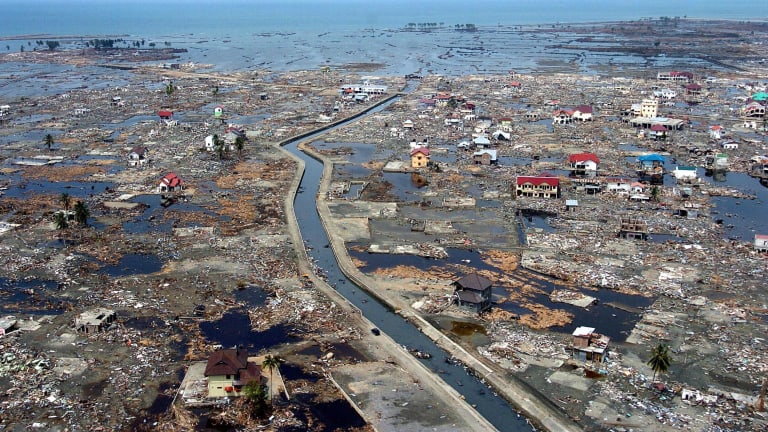
The 9.1 magnitude earthquake off the coast of Sumatra is estimated to have occurred at a depth of 30 km. The fault zone that caused the tsunami with a strike length of about 1,300 km vertically moved the seabed a few meters along the island. This is the third-largest earthquake ever recorded on a seismograph and the longest fault duration in history (between 8.3 and 10 minutes).
In addition, this earthquake also caused the entire Earth to vibrate 1 centimeter (0.4 inches) and triggered earthquake activity in various regions, including Alaska. The epicenter is located between Simeulue Island and Sumatra.
As a result of the magnitude quake, tsunamis as high as 15 to 30 meters appeared in various countries (while the maximum height was recorded at 51 m) in Lhoknga, Aceh. Tsunamis and earthquakes hit many countries in Southeast Asia and beyond, including Indonesia, India, Thailand, Somalia, Tanzania, Maldives, Sri Lanka, Kenya, South Africa, Myanmar, Bangladesh, the Maldives, Malaysia, the Seychelles and others.
Many eyewitnesses around the world reported an increase in sea wave height, including places in the United States, Britain, and Antarctica. The tsunami killed 230,000 to 280,000 people in 14 countries and sank many coastal settlements. This earthquake and tsunami were one of the deadliest natural disasters in history, and Indonesia became the most severely affected country, besides Sri Lanka, India, and Thailand. Total damage reached US $ 19.6 billion (the dollar exchange rate in 2017).
On March 11, 2011, at around 14.46 local time, a devastating 9.0 magnitude earthquake shook the Tohoku region off the coast of the Pacific Ocean, specifically the eastern region of Sendai, Honshu, Japan.
The Tsunami Warning Center immediately issues tsunami alert in Japan and surrounding areas. This earthquake caused tsunami warnings for Japan’s Pacific coast and at least 20 countries, including the entire Pacific American coast from Alaska to Chile.
About an hour later, a tsunami as high as 33 feet or about 10 meters and traveling at 800 km per hour, hit the coastal areas of Miyagi Prefecture and its surroundings. As a result, around 18,000 human lives were lost.
Not only that, the next day, an earthquake measuring 6.2 on the Richter scale then shook Nagano and Niigata Prefectures. Lindu also rocked the west coast of Honshu Island with a strength of 6.3 SR. The Japan Broadcasting System (Tokyo Broadcasting System / TBS) and the Japanese National Police Agency reported a total death toll of 15,269 people, 5,363 injuries, and 8,526 missing in six Sakura prefectures.
The shock also resulted in a nuclear emergency, where the Fukushima Daiichi nuclear power plant began to leak radioactive steam. The World Bank estimates that it can take up to five years for Japan to overcome financial losses of US $ 235 billion.
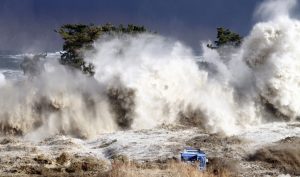
Experts from the Japan International Cooperation Agency (JICA) assigned to the National Disaster Management Agency (BNPB) Naoto Tada said the danger of disasters would not be avoided while living in disaster-prone areas.
“After the Tohoku earthquake and tsunami in 2011, we realized the tsunami had exceeded many estimates, and there was no upper limit in the disaster,” Naoto said at a press conference at Graha BNPB, as reported by Antara on Wednesday (7/31/2019).
Therefore, to deal with disasters, the Japanese government identified the most disasters in each region even though it would not be perfect to avoid casualties and huge economic losses.
Based on the Tohoku earthquake and tsunami experience, the Japanese Cabinet Office then conducted a tsunami simulation study caused by the Nankai Trench in March 2012.
“Based on the simulation, in accordance with the 2011 tsunami which reached a height of 34 meters, the estimated death could reach 320 thousand people or 17 times the 2011 incident,” he said.
Therefore, supported by news in the mass media, the central and regional governments in Japan then undertook mitigation efforts against the earthquake and tsunami, such as making earthquake-resistant buildings, spatial planning, education, and disaster preparedness training.
“The government is also campaigning for three principles, which are not to give up, start evacuating after a shock, and evacuate more quickly to a safe place,” he explained.
Based on the principle of not giving up, the Japanese government conducts disaster education to residents and students as a whole. It relocates vital buildings and rescue centers to areas that are not expected to be reached by the tsunami.
The Kuroshio City Government, which, based on simulations with the highest tsunami potential, also built evacuation towers with a height of 22 meters, each of which could accommodate 230 people.
“The government also provides subsidies to strengthen buildings to be earthquake resistant and hold seminars for residents and builders,” he said.
No less critical, Japanese people also build disaster mitigation efforts at the smallest level, namely the community to the family by making cards containing important notes and conducting evacuation drills regularly.
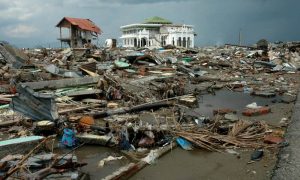
Geologists call the 2004 tsunami a “monster earthquake.” An earthquake that shocks last longer than usual. Followed by mountains of waves crashing onto the beach at breakneck speed.
The December 2004 tsunami wave was recorded as the worst natural disaster in modern history. An event with an unimaginable dimension, in terms of the number of victims, as well as from the geological aspect.
Giant waves occur after an earthquake under the sea, about 100 kilometers west of the coast of Sumatra, at 07:59 local time. The epicenter was at a depth of about 30 kilometers below the seabed. There are two colliding continental plates. Severe pressures then cause one plate to shift down another plate. That happened on December 26, 2004, on a 1000 kilometer line. This is a very rare event.
The resulting earthquake lasted up to 10 minutes. Usually, this kind of earthquake only lasts a few seconds. According to various calculations, the strength of the earthquake at that time reached 9.1 to 9.3 on the Richter scale and is the second-largest earthquake in the last 100 years. In 1960, an earthquake in Chile was recorded at 9.5 on the Richter scale.
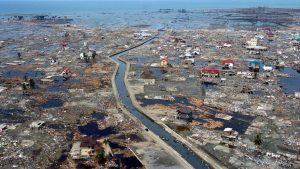
One of the continental plates shifted up to 15 meters, so it moves vertically. That caused the seabed in several places to move up to 10 meters. That’s what makes the sea level at the site rises suddenly. The water that is pushed then forms a big wave, which moves at very high speed, as fast as a jet, and moves towards the coast. In deep-sea areas, fast-moving water is not very pronounced on the surface. But toward the increasingly sloping coastal areas, the waves will roll higher and higher. On the coast of Sumatra, wave height has reached about 30 meters.
In the Indian Ocean, from Sumatra (Indonesia) to the Andaman Islands, Thailand, South India, Sri Lanka and parts of Africa, there were around 230,000 people killed in 14 countries. The worst damage occurred in Sumatra, with around 170,000 dead. All buildings in the coastal area were destroyed, in some places up to a distance of five kilometers on land. Millions of people are left homeless.
Tourists who are diving in the middle of the sea, feel the tides are faster, but they experience nothing. Also, the fishermen who are at sea, do not feel there will be giant waves. Residents who react quickly and can flee to the high ground are also saved. People who live at the top of the house, who are tall enough and strong enough to resist the lunge of water and things that are dragged along with the water, can survive.
No one in the disaster area had a tsunami emergency plan at that time. United States tsunami warning center in Hawaii immediately realized and make an emergency call, that there were a great earthquake and the threat of a terrible giant wave. But they did not know which parties to contact in the disaster area. So they issued a general warning.
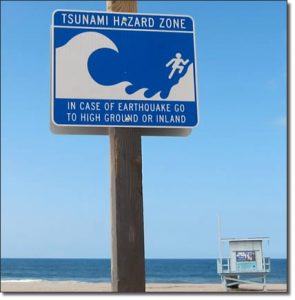
Now a tsunami early warning system has been built along the waters between Indonesia and Thailand. Every change in the water level is monitored for 24 hours, and there is an automatic warning if there is a sudden change. The early warning center in Jakarta is ready to send warnings to regions throughout Indonesia.
With the help of German experts from the Geological Research Center in Potsdam, the tsunami early warning system was successfully functioning. Warnings will also be sent via SMS to regions. Many hotels in the coastal area now have warning boards and evacuation plans in case of a tsunami threat.
Tsunamis cannot be predicted. Tensions between colliding plates always occur. Continental plates to the west of Sumatra have been under pressure until now. In April 2012, there was another underwater earthquake in the region with a magnitude of 8.6 on the Richter scale. But there was no large and wide tsunami wave. Why? Because the plates were moving horizontally.
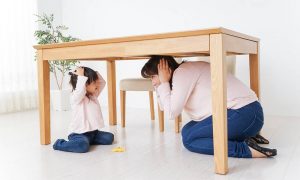
Japan is a developed Asian country, parallel to South Korea and China, which are now economic giants. Who does not know products from Japan, electronic devices from television, sound systems, to automotive, Japanese products are known for their quality assurance. We are undoubtedly familiar with the brands of Honda, Yamaha, Toyota, and others. Japanese brands echoed also reached the international market. However, besides being known for its strong work ethic and rapid economic development, Japan is also synonymous with disaster countries.
This time we will get to know more about what causes Japan to be a country prone to natural disasters and how its people adapt to inherent challenges that cannot be underestimated.
Japan is an island nation in the middle of the Pacific Ocean. The islands in Japan are right above the Pacific Ring. Because it is located in the Pacific Rings of Fire, it shows that Japanese territory is also the meeting point of three active tectonic plates, including the Pacific tectonic plates, the Philippine Sea, and Eurasia. The three tectonic plates move together and have a devastating effect on Japanese territory. The movement of the three plates also affects the land contour in Japan, which has active volcanoes in many areas.
As in Geography, the earth’s crust has many parts. In the invisible part, the plates move. Considering Japan is right at the meeting point of three tectonic plates that are actively moving, it’s no wonder that the earthquake is like a daily food.
The number of active volcanoes, such as Mount Fuji, also adds to the power of earthquake activity on Japanese soil. Spurting magma contributes to the severity of natural disasters if they occur. An earthquake that has a large force and its effect to affect the sea trough has the potential to cause a tsunami. The damaging effects of the tsunami increased the number of victims and worsened damage to public facilities or buildings.
The right side of many volcanoes is that the soil becomes fertile. Lava vomit that reaches the ground, after a long time it will improve soil content. No wonder we can see Japan’s agricultural region is also very green and lush.
Given the dangerous risks of such natural and geographical conditions, the Japanese government has launched many disaster prevention and prevention programs that are now pilot projects in other countries.
These breakthroughs include the following:
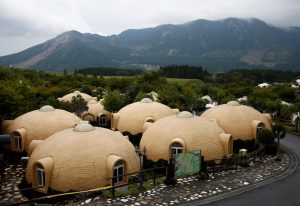
In constructing multi-story buildings, public facilities, and especially for residential areas, the Japanese government has high standards to judge whether the building is worth standing or not. The two main requirements for qualifying to build are that the building will not collapse due to an earthquake within the next hundred years and will not be damaged due to age or things beyond the shock for the next ten years. The contractors must report all materials used to build until they are declared feasible, then they can start their work.
For Japanese people who live on the coast, the area is equipped with tsunami warning equipment. The tool will automatically ring or give a signal a few minutes before a potential tsunami occurs. The goal is that residents can flee to high places before a disaster occurs. Also, cell phones in Japan are equipped with earthquake warning systems. If there is an unusual vibration on the ground, then there will be a signal that responds to the cell phone to give a warning to the public. The message on the cell phone works a few seconds before the earthquake occurs so that people can immediately find shelter.

Given the earthquake-prone location, education facing disasters has been included in the Japanese education curriculum. School students are trained from kindergarten age so as not to panic when an earthquake occurs. Disaster simulations are also often performed, and this is also applied to adults. They will be taught to bend under the table immediately or look for the corner that will have the smallest risk of being crushed by rubble.
Japanese people are also given instructions to prepare provisions for disasters to occur to survive until rescue teams come to evacuate. Emergency backpacks containing medicines, food supplies, warm blankets, and other supplies must also be prepared so that they can be brought at any time at the evacuation site.
We can learn many things from Japan, not only from their culture and work ethic. Readiness in dealing with natural disasters is exemplary, especially for people whose territory is also often affected by disasters.
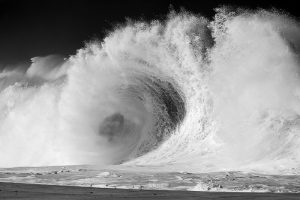
Japan is the country that most often experienced significant earthquakes and has an impact on society. Because Japan is at the confluence of the active Pacific Ocean Plate and the Philippine Sea Plate. So each time it collides or separates, the shocks will be felt to the surface of Japanese land.
History records the most significant earthquake and tsunami that occurred in Japan on March 11, 2011 — starting from a devastating earthquake off the northeast coast of Honshu Island, the main island in Japan. The quake then triggered a series of massive tsunamis, especially in the Tohoku region.
Then, a giant tsunami also triggered accidents and power outages along the coast. The earthquake measuring on nine Richter scales is located about 30 kilometers beneath the floor of the Western Pacific Ocean. The March 11 earthquake was felt in Petropavlovsk-Kamchatsky region (Russia), Kaohsiung (Taiwan), and Beijing (China). This earthquake became an earthquake with the highest strength since the 19th century. The damage caused is not a very kind one.
An estimated 200 thousand people died or disappeared, and another 500 thousand had to be evacuated. Tsunamis and earthquakes affect nuclear power stations and cause a nuclear accident. The losses created from this disaster were 360 billion US dollars. Nevertheless, Japan is known as the most disaster alert country in the world. Japan has an elementary school education system about earthquake mitigation. Japan was conducting disaster simulations and periodic rescue efforts since 1995, especially in the Kobe region, which then spread throughout the country. An earthquake is a natural warning of a tsunami coming. Earthquakes are always followed by signals broadcast by local television or radio. Ships are prohibited from returning to the sea, and residents of areas near the coast are immediately evacuated.
For example, in the 2004 Indian Ocean tsunami, many people died because they watched the seawater shrink and revealed its ground floor, without knowing it was a sign of a tsunami.

From 1995 to 2011 (the biggest earthquake occurred), Japan mitigated the earthquake and tsunami disaster earlier than any country so that the training that had been conducted so far began to show results. Victims, damage, and losses can be suppressed.
When a magnitude nine earthquake occurred, a tsunami struck the area of the population causing damage and flooding. The nuclear cooling system at the Fukushima Daichi nuclear plant is broken, and there is a fear of a nuclear leak. There were still aftershocks of 7 Richter scale followed by minor earthquakes. One week after the earthquake, the nuclear emergency was announced, around 1 million houses had not yet received a clean water supply.
Some 270 thousand people in the nuclear evacuation area have been evacuated, the road to the beach has been sterilized, and 14 ports have resumed in operations. Electricity has recovered 90 percent in residential areas. One month after the earthquake, 90 percent of water services in residential areas have returned to normal, and the railroad track has returned to normal, except at offshore points that have suffered severe damage.
In addition to these preparations, the Japanese government is following up on disaster mitigation through the following rules.
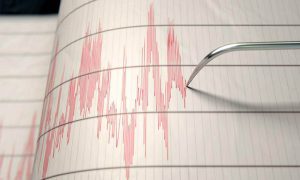
Try to be calm and not panic when an earthquake disaster is announced with verified information. To prepare for earthquake prevention efforts, during and after an earthquake, so here are the guidelines:
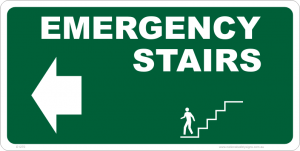
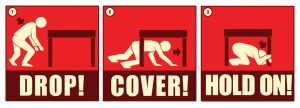
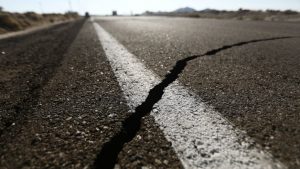
Earthquakes can occur while you are sleeping. It is very important to arrange the bedroom to be safe from an earthquake. For example, do not put objects that easily fall from the wall of the bed. Nail the cupboard to the wall and make sure it holds really strong. Also, make sure any object doesn’t fall from above your head when there is vibration.